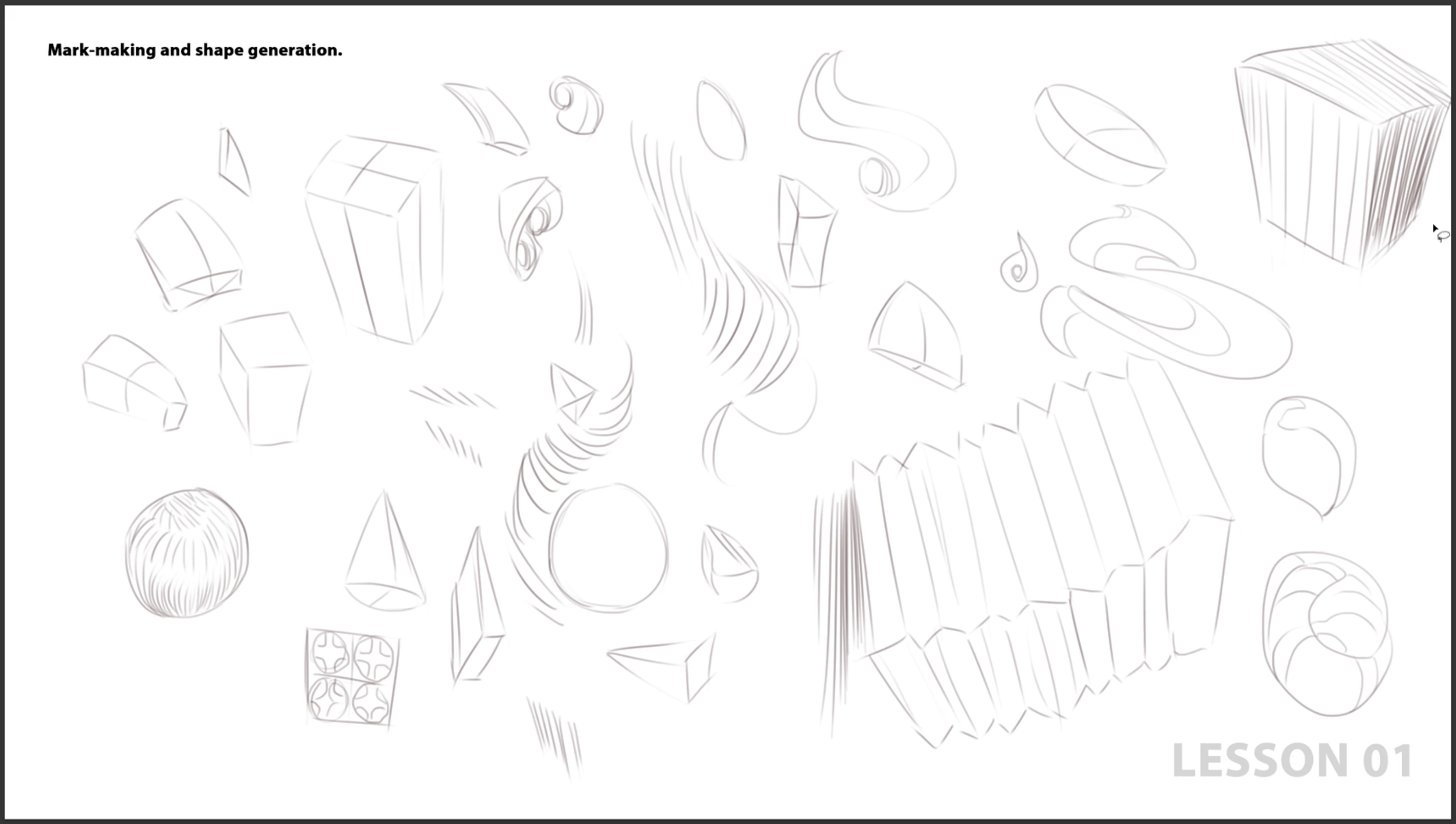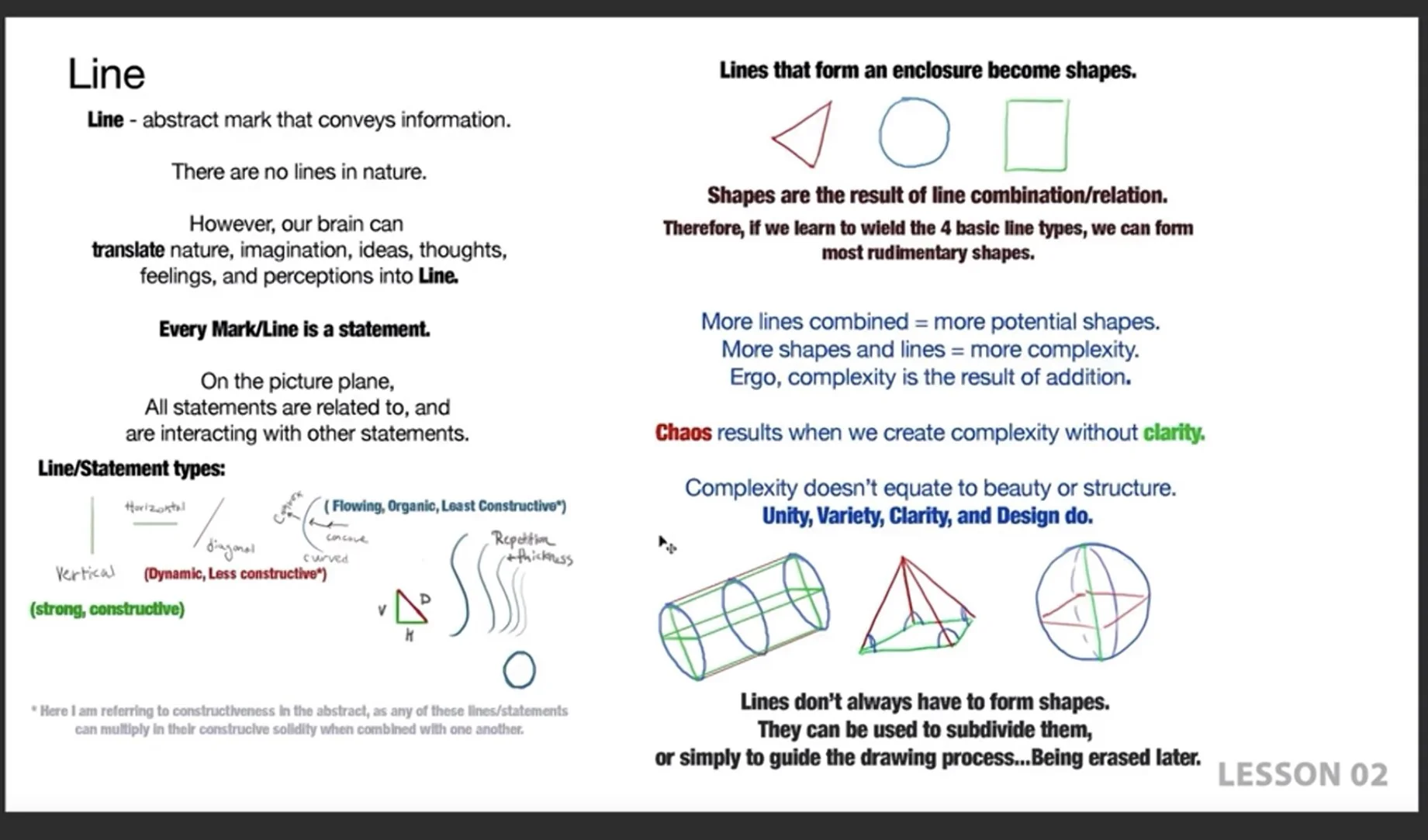Mastering the art of drawing: A Beginner’s Guide
Master the Art of Drawing Anything: A Beginner's Guide
First and foremost, if you’re more of a video-learner, try this leafing through The Beginner Drawing Course 1 Lesson, with over 600K views:
Drawing is a skill that anyone can learn with practice and dedication.
In this comprehensive guide, I'll walk you through the steps to sketch anything, even if you're just starting.
By the end, you'll have the confidence and techniques to tackle any subject. For an extended series of free lessons on "Learning to Draw" scroll to the bottom of this post to download it for free.
(Existing subscribers, check your email for the video links!)
How to Draw Anything: Step-by-Step Guide
1. Warm-Up and Hand-Eye Coordination
Before diving into a drawing session, it's essential to warm up. This helps loosen your drawing muscles and get comfortable with your tools. Start by making different marks with your pencil, stylus, or pen. Experiment with:
- Scribbles
- Doodles
- Dots
- Stippling
- Hatching
- Zig-zag lines
Vary the pressure and movement to see what your tool can do. This practice should be enjoyable and playful to keep you motivated.
2. Basic Shapes and Light Lines
After warming up, begin your drawing with basic shapes. Almost everything you want to draw can be broken down into circles, rectangles, and triangles. Start with light lines and simple shapes to create a solid underdrawing. This helps establish the proportions and structure before adding details.
3. Refine, Check Angles and Edges, Add Solid Lines
Make it stand out
Whatever it is, the way you tell your story online can make all the difference.
Once you have your basic shapes, refine them with more solid lines. Observe your subject closely, checking angles and edges. Drawing is as much about seeing as it is about making marks. Use your pencil as a measuring tool to match angles and proportions. Define your contours with confident, solid lines.
4. Quick, Loose Sketches
Practice makes perfect. Create quick, loose sketches from different angles to improve your hand-eye coordination. These quick drawings will help you become more comfortable with the drawing process. Shorter, more frequent sessions are often more effective than long, infrequent ones. These are called gesture drawings - where you’re aiming to capture the basic flow and proportions, not all the detail.
5. Focus on Contrast and Details
To finish your drawing, add contrast, light, and details. Avoid overworking your sketch; instead, add details sparingly to guide the viewer's eye. Use different marks and textures to enhance your drawing. Add shadows and highlights to create depth and volume.
6. Practice and Learn from Mistakes
Consistency is key. Practice these steps regularly to improve. Mistakes are part of the learning process, so embrace them. Building muscle memory takes time, so be patient and persistent.
7. Advance Your Skills
Once you're comfortable with the basics, explore more advanced concepts like 3D volumes, perspective, values, light and shadow, and foreshortening. These will elevate your drawings and make them more realistic and dynamic.
Enhance Your Drawing Skills with Our Course
Ready to take your drawing to the next level? Check out my course, "Sketching Fundamentals," which offers step-by-step guidance and direct feedback on your assignments. Learn to draw anything with a focus on the natural world. The next guided session starts on September 25, 2023.
[Learn More About the Course]
For more drawing tips and tutorials, follow our blog and share this post with your friends and fellow art enthusiasts. Happy sketching!
---
**CategoriesArt Tutorials, Beginner's Guide, Drawing Tips
Feel free to link to this guide or share it on social media to help others discover the joy of drawing!
Above all else, the most important thing is to cultivate a genuine curiosity and joy. Get a sketchbook to take everywhere you go in a backpack or small bag— get pencils or mechanical pencils and an eraser to sketch everything and keep your curiosity fresh, Soon, you’ll find yourself down rabbit holes and wormholes of drawing verve, awakening your artitic abilities and searchingfor more fundamental knowledge to wrap your craft around.
Once you start to practice the basics and understand the things that artists have given us from their decades of work, you’ll expedite your progress quicker than you know.
If you’re interested in free lessons, sign up below and take the BDC 6-lesson challenge! It’s a great way to kick-start your drawing journey while still getting a grasp of the fundamental basics that make your art work.
That’s all for now. This is plenty to chew on, and most of you won’t even make it this far, sadly. It’s just the truth of the matter. I’ve been teaching art for over 10 years, and it’s rare to find someone committed enough to search for basics, practice them, and watch the magic that unfolds.
Most people quit, or seek new hobbies and novelty in this dopamine-addled world.
But I hope you’re different. I hope you’re ready to commit to learning your craft, to expressing yourself and the worlds and characters and scenes you’ve got hidden within.
Until next time…Happy drawing!






